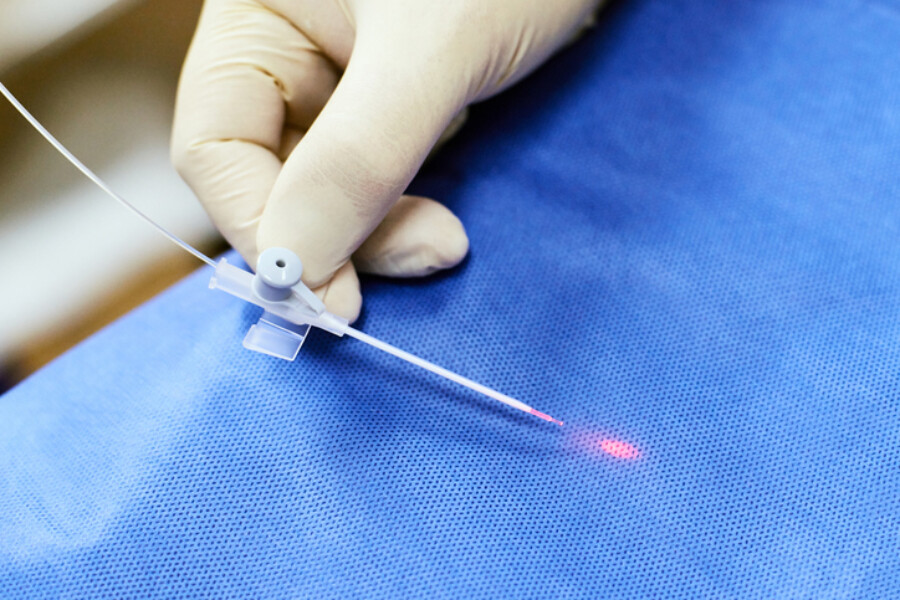Laser Treatment for Varicose Veins

Two of the most popular varicose vein treatments — laser ablation and radiofrequency ablation — use heat to eliminate varicose veins.
If you’re considering treatment for your varicose veins, you may know that a couple of the most widely-used procedures use heat therapy to eliminate the unsightly, sometimes painful, bulging twists of blue and purple veins on the legs and feet. Although there a number of modern varicose vein treatments, laser ablation and radiofrequency ablation are two of the most popular. Each has proven to be safe and effective in treating varicose veins, and both have essentially replaced the more invasive vein stripping procedures employed in the past.
Laser ablation and radiofrequency ablation use heat to close off a swollen vein that can no longer pump blood back to the heart from the extremities. It’s that trapped blood that causes the vein to bulge and appear as a varicose vein. Once the damaged vein collapses, blood moves to healthier veins, and the varicose vein gradually diminishes. Here’s how the process works for laser ablation and radiofrequency ablation.
How Heat Therapy Works
A vein specialist will recommend either laser or radiofrequency ablation based on the size and location of the varicose vein and your individual needs. Running along the surface of your leg are two saphenous veins: the great and small saphenous veins. Varicose veins in the great, small, or perforator veins (veins that connect the superficial veins to the deep veins inside the leg) are candidates for radiofrequency ablation. Laser ablation is reserved for large, painful varicose veins or venous insufficiency in the great saphenous vein.
Both procedures begin with an ultrasound to determine the location of the varicose vein to be treated. The area surrounding the vein is numbed with an anesthetic; the anesthesia also pushes blood from the vein and protects the outside of the vein with a layer of fluid. Then, the vein specialist inserts a Closure catheter (for radiofrequency ablation) or laser fiber, and gently guides it up through the vein.
For radiofrequency ablation, a radiofrequency generator heats the vein wall. During a period of one to two minutes, the vein specialist withdraws the catheter as the temperature is turned down. Eventually, the collagen in the vein wall shrinks and closes.
Laser ablation operates on the same principle, except instead of radiofrequency waves a laser fiber delivers short bursts of heat to shut down the damaged vein. Like radiofrequency ablation, laser ablation is quick, and you can resume most of your normal activities after the procedure.
Follow-up care includes an ultrasound one to three days after the initial treatment to check for any complications, such as deep vein thrombosis. To aid in your recovery from laser or radiofrequency ablation, you should start an exercise routine, maintain a healthy weight, and don’t sit or stand for long periods.
The Importance of Treating Varicose Veins
For many, varicose veins are a cosmetic issue, but if you also experience discomfort and swelling in the legs and feet, varicose vein treatments like laser ablation and radiofrequency ablation alleviate those symptoms. At the Center for Vein Restoration, we’ll discuss the various therapies available today and help you select your preferred method. Contact us today for an appointment.